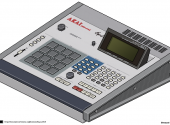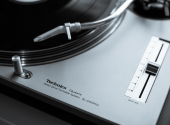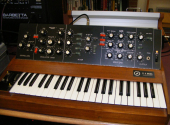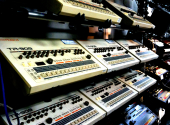
The Gear That Made Us #9: The Prophet-5
Known as the first ever polyphonic synthesizer with fully programmable memory, the Prophet-5 is a mighty analogue synth that was first launched in 1978. In October 2020, its chief designer Dave Smith announced that it would be re-released with some modifications. Uncover the magic behind the modulation in this ninth instalment of "The Gear That Made Us."
A logical approach
Before the Prophet-5 came onto the scene, a synthesizer user was required to recreate their sounds manually every time they used the machine. Working near Silicon Valley in the technology world, it was David Smith who realized that the new microprocessors being used in computers had the potential to deliver more possibilities to musicians in a synthesizer by allowing for the saving of sounds in memory. For context, a microprocessor is essentially an integrated circuit made up of millions of transistors and known as the "Professor X" of the electronics world. It forms the core or "brain" of the electronic circuit and is able to compute both logical and arithmetic instructions that are programmed into it. Although Smith expected Moog or ARP to design the instrument he had in mind, nothing appeared from them, so in the early months of 1977, he left his full-time job and began to build it himself.
There were actually multiple versions of the early Prophet, spanning a timeframe of six years. 182 versions of Rev 1 (Revision 1), 1000 of Rev 2 (with additional walnut casing) and about 6000 of Rev 3. With the latter, the analogue integrated circuitry was changed from SSM to CEM which was in line with the majority of synthesizers at the time. The early version of the Prophet-10 (released in 1981) even featured an Exatron Stringy Floppy drive for storing patches and sequencer data. This was later replaced with a tape drive which was more stable and had more room for storing data. The most recent version of the Prophet-10 (released in 2020) now features a Vintage knob that can be used to dial in "old-school randomness" helping to create sounds that are warm and organic.
In unison
Unlike a monophonic synthesizer (often used for basslines, solos and leads), with a polyphonic synth, you have access to multiple voices. In the case of the Prophet-5, you may be able to work out that the number of voices that can be played at once is 5 (there are 2 VCOs per voice in this instance). This basically means that more than one note can be played at the same time, which results in rich ambient pads but especially allows chords and piano style playing. All in all, a polysynth is much more versatile and can offer more atmosphere and character to a track.
Although the original Prophet-5 didn’t offer MIDI (Musical instrument Digital Interface), today through a retrofit kit this can be installed in a relatively straightforward fashion (not including the Rev 3 version). Nonetheless, it was Smith who co-created MIDI in 1983, along with the founder of Japanese company Roland, Ikutaro Kahehashi. Before it came along, there was no standard for synchronising electronic musical instruments produced by different companies. Instead, proprietary methods were used such as CV/gate, DIN sync and Digital Control Bus (DCB). The proposal for this new standard in the 1981 paper titled "Universal Synthesizer Interface" led Robert Moog (founder of Moog Music) to announce the new technology a year later. It is the creative possibilities enabled by MIDI that are credited for helping to bring life back to the music industry in the 1980s.
The whole is better than the sum of the parts
It is interesting to note that Dave Smith originally founded Sequential Circuits two years after acquiring his first synthesizer, a Moog Minimoog in 1972. Smith was one of the product's earliest owners and was soon trying to contemplate how he could use his experience with computers and engineering to expand the Minimoog’s capabilities and possibly bring new products to the market. After initially creating an analogue sequencer called the Model 600, he soon followed this up with the Model 800—a sequencer with its own microprocessor.
Just some of the artists who have used the Prophet-5 when performing include Jimmy Page, Steve Porcaro, Herbie Hancock, James Newton Howard, Kool & the Gang, David Byrne, Brian Eno, Kraftwerk, New Order, Prodigy, Steely Dan, Pink Floyd, Pet Shop Boys and Vangelis.
From the garage to the world
When Sequential Circuits Inc. started building the Prophet-5, it was through the old-fashioned approach—hand-built out of a Southern Californian garage. When word got around, countless artists wanted one, sometimes waiting up to two years before their demand could be met. Until its arrival, there were no guarantees for sounds to be exactly recreated in a synthesizer but thanks to the programmable memory, that was no longer an issue. Today, over 40 years since the original was released, the legacy of the Prophet-5 lives on.
So what do you think of the Prophet-5? Do you think it will keep its place as one of the most important synthesizers in the future?
If you have found an error or typo in the article, please let us know by e-mail info@insounder.org.





